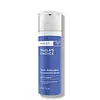What's inside
What's inside
 Key Ingredients
Key Ingredients

 Benefits
Benefits

 Ingredients Side-by-side
Ingredients Side-by-side

Water
Skin ConditioningPropanediol
SolventTetrahexyldecyl Ascorbate
AntioxidantDiheptyl Succinate
EmollientGlycerin
HumectantCaprylic/Capric Triglyceride
MaskingHydroxyethyl Acrylate/Sodium Acryloyldimethyl Taurate Copolymer
Emulsion StabilisingCapryloyl Glycerin/Sebacic Acid Copolymer
Skin Conditioning1,2-Hexanediol
Skin ConditioningPentylene Glycol
Skin ConditioningTocopheryl Acetate
AntioxidantMaltodextrin
AbsorbentSqualane
EmollientHydroxyacetophenone
AntioxidantPunica Granatum Seed Extract
Skin ConditioningLactobacillus/Arundinaria Gigantea Leaf Ferment Filtrate
Skin ConditioningSodium Citrate
BufferingRhodiola Rosea Root Extract
EmollientVitis Rotundifolia Fruit Extract
Skin ConditioningPolysorbate 60
EmulsifyingCitric Acid
BufferingSodium Phytate
Sorbitan Isostearate
EmulsifyingArctostaphylos Uva-Ursi Leaf Extract
Skin ConditioningGeranium Maculatum Extract
TonicTerminalia Ferdinandiana Fruit Extract
AntioxidantLeuconostoc/Radish Root Ferment Filtrate
AntimicrobialErgothioneine
AntioxidantWater, Propanediol, Tetrahexyldecyl Ascorbate, Diheptyl Succinate, Glycerin, Caprylic/Capric Triglyceride, Hydroxyethyl Acrylate/Sodium Acryloyldimethyl Taurate Copolymer, Capryloyl Glycerin/Sebacic Acid Copolymer, 1,2-Hexanediol, Pentylene Glycol, Tocopheryl Acetate, Maltodextrin, Squalane, Hydroxyacetophenone, Punica Granatum Seed Extract, Lactobacillus/Arundinaria Gigantea Leaf Ferment Filtrate, Sodium Citrate, Rhodiola Rosea Root Extract, Vitis Rotundifolia Fruit Extract, Polysorbate 60, Citric Acid, Sodium Phytate, Sorbitan Isostearate, Arctostaphylos Uva-Ursi Leaf Extract, Geranium Maculatum Extract, Terminalia Ferdinandiana Fruit Extract, Leuconostoc/Radish Root Ferment Filtrate, Ergothioneine
Cyclopentasiloxane
EmollientDimethicone
EmollientTetrahexyldecyl Ascorbate
AntioxidantPalmitoyl Tripeptide-5
Skin ConditioningCeramide NP
Skin ConditioningTocotrienols
Skin ConditioningTocopherol
AntioxidantUbiquinone
AntioxidantThioctic Acid
AntioxidantTocopheryl Acetate
AntioxidantMagnesium Ascorbyl Phosphate
AntioxidantFerulic Acid
AntimicrobialBeta-Glucan
Skin ConditioningSuperoxide Dismutase
AntioxidantEpigallocatechin Gallate
AntioxidantErgothioneine
AntioxidantGlutathione
Xanthophylls
Skin ConditioningGlycine Soja Seed Extract
Skin ConditioningGlycerin
HumectantArctostaphylos Uva Ursi Leaf Extract
Skin ConditioningLupinus Albus Seed Extract
Skin ConditioningCurcuma Longa Root
Skin ConditioningElaeis Guineensis Oil
EmollientPhenoxyethanol
PreservativeCyclopentasiloxane, Dimethicone, Tetrahexyldecyl Ascorbate, Palmitoyl Tripeptide-5, Ceramide NP, Tocotrienols, Tocopherol, Ubiquinone, Thioctic Acid, Tocopheryl Acetate, Magnesium Ascorbyl Phosphate, Ferulic Acid, Beta-Glucan, Superoxide Dismutase, Epigallocatechin Gallate, Ergothioneine, Glutathione, Xanthophylls, Glycine Soja Seed Extract, Glycerin, Arctostaphylos Uva Ursi Leaf Extract, Lupinus Albus Seed Extract, Curcuma Longa Root, Elaeis Guineensis Oil, Phenoxyethanol
 Reviews
Reviews

Ingredients Explained
These ingredients are found in both products.
Ingredients higher up in an ingredient list are typically present in a larger amount.
Ergothioneine is an amino acid found naturally in mushrooms, grains, and meat. It has antioxidant and skin soothing properties.
This amino acid helps with:
- Maintaining DNA stability and cell reproduction
- Enhances cellular immunity
- Skin brightening
- Anti-aging
- Skin soothing
Glycerin is already naturally found in your skin. It helps moisturize and protect your skin.
A study from 2016 found glycerin to be more effective as a humectant than AHAs and hyaluronic acid.
As a humectant, it helps the skin stay hydrated by pulling moisture to your skin. The low molecular weight of glycerin allows it to pull moisture into the deeper layers of your skin.
Hydrated skin improves your skin barrier; Your skin barrier helps protect against irritants and bacteria.
Glycerin has also been found to have antimicrobial and antiviral properties. Due to these properties, glycerin is often used in wound and burn treatments.
In cosmetics, glycerin is usually derived from plants such as soybean or palm. However, it can also be sourced from animals, such as tallow or animal fat.
This ingredient is organic, colorless, odorless, and non-toxic.
Glycerin is the name for this ingredient in American English. British English uses Glycerol/Glycerine.
Learn more about GlycerinTetrahexyldecyl Ascorbate (THD) is a stable and oil-soluble form of Vitamin C.
THD is special in that it has the ability to travel deeper into skin than traditional ascorbic acid while maintaining the same skin benefits (double win!).
Because it’s oil-soluble, THD dives deep into your skin’s fatty layers (think ceramides and cholesterol) to fight off the kind of free radicals that mess with your skin barrier. This makes it a great pair with water-based vitamin C (ascorbic acid) that mainly works on the surface.
Even at just 0.1%, THD is already showing great antioxidant activity. When used up to 2%, it helps keep your skin happy and calm, especially when it’s stressed from pollution or sun.
Want to fade dark spots or tackle hyperpigmentation? You’ll want 5% or more. Pairing it with brightening buddies like niacinamide or licorice root gives even better results. One study even used 30% THD with other brighteners and saw real results on stubborn discoloration, even in melasma-prone skin.
A note on THD: It’s has a slightly silky, oily texture and usually shows up colorless or pale yellow (though the exact shade can vary by supplier).
While you can sneak it into water-based formulas, it really shines when paired with silicones or oils, which help your skin soak it up better.
THD is pretty stable, but it’s still vulnerable to degradation like ascorbic acid. Too much light or heat (above 113°F / 45°C) can break it down over time. Go for dark and opaque packaging that keeps it safe and shady!
Read more about other types of Vitamin C:
Learn more about Tetrahexyldecyl AscorbateTocopheryl Acetate is AKA Vitamin E. It is an antioxidant and protects your skin from free radicals. Free radicals damage the skin by breaking down collagen.
One study found using Tocopheryl Acetate with Vitamin C decreased the number of sunburned cells.
Tocopheryl Acetate is commonly found in both skincare and dietary supplements.
Learn more about Tocopheryl Acetate